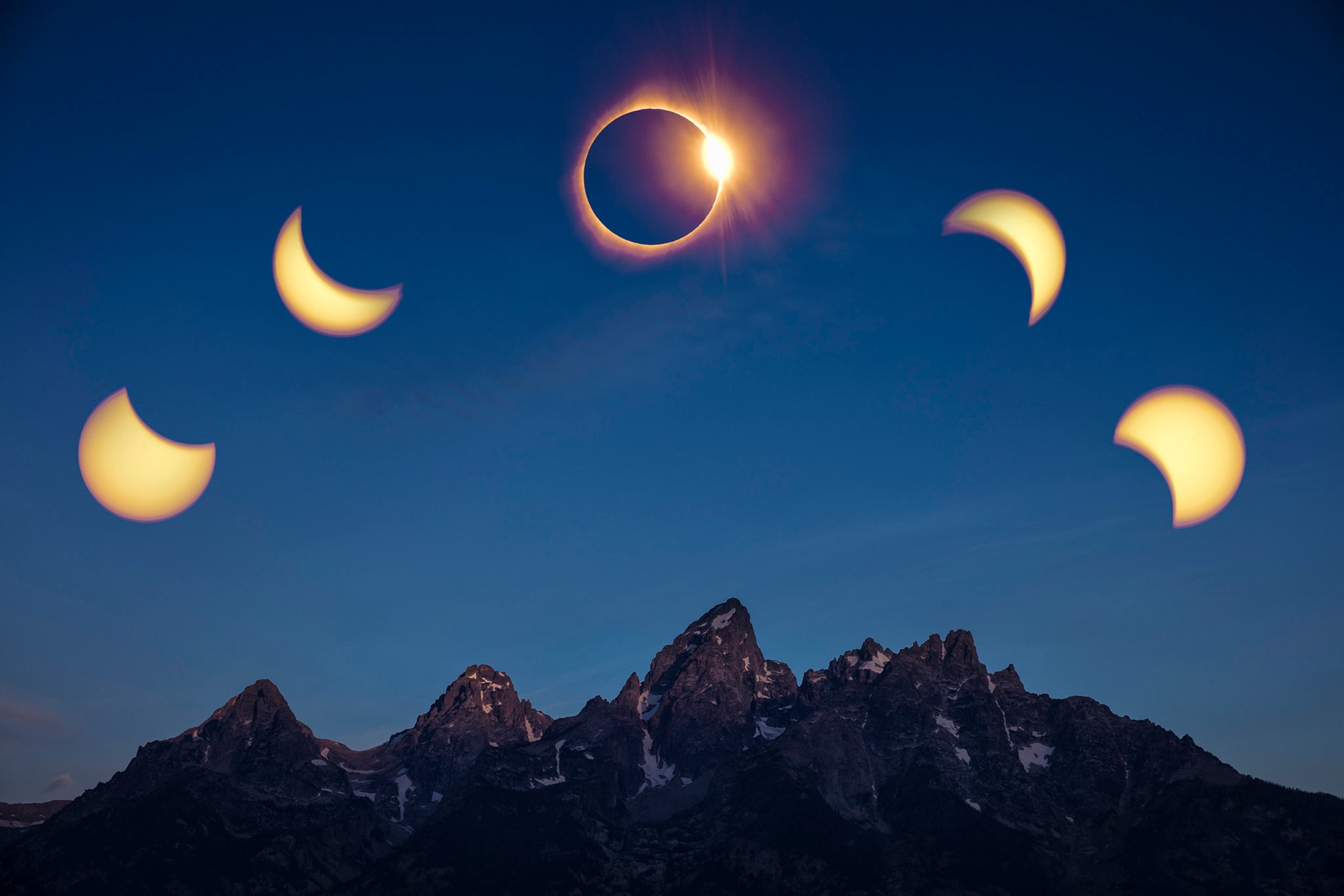
Daring Eclipse Stunt Caught in Dramatic Photo
Photographer Keith Ladzinski balanced a risky stunt, technical challenges, and a racing clock to capture this striking image of the total solar eclipse.
When Red Bull athlete Alex Mason completed a masterfully daring feat—slacklining his way above a 150-foot crevasse in Jackson Hole, Wyoming, during Monday’s total solar eclipse—Keith Ladzinski was there to immortalize it.
In a chilly pseudo-twilight dark enough to see stars, surrounded by the delighted hollering of the huge crowd watching the eclipse from a nearby peak, Mason “just kept walking, almost braille-ing his way across this thing with his feet,” Ladzinski says.
Mason’s stunt is remarkable—and so is Ladzinski’s shot, an in-camera double exposure he was “lucky” to capture.
Related: Exclusive First Photos of the 2017 Solar Eclipse
















While scouting the shooting location, a famous ski drop called Corbet’s Couloir, Ladzinski realized that at the moment of totality, the sun would be almost directly overhead—meaning that to capture both eclipse and athlete in the same frame, he’d have to shoot straight up. “It’d be pretty much a butt shot.”
Instead, to compose an image that showed both sun and slackliner to their best advantage, he’d have to move the sun. “You can’t move the sun unless you double expose it,” he says, “and in that case you can put it wherever you want.”
In traditional film cameras, double exposures require exposing the same film to two different light conditions—that is, two different compositions. A digital camera does the same thing in a single digital file. It’s a tricky bit of shooting, but it wasn’t the only factor Ladzinski had to deal with.
At 5 a.m. on the day of the eclipse, Mason, Ladzinski, and the support crew got into place: setting up rigging and large strobe flashes on both sides of the cliff, they settled in for the waiting game. (See how Nat Geo staff celebrated the 2017 eclipse.)
At 11:36 a.m., totality hit: the moon blocked the sun, sending its shadow racing across the earth at nearly 2,000 miles an hour, blanketing the crevasse where Mason paced the high line and Ladzinski frantically made photos. As many times as he could, he set the eclipse in the frame’s upper corner, then swiveled, triggering the flash to capture Mason and the landscape in the space left dark in the first exposure.
“You’re having to think and move really quick, you only have 100 seconds,” he laughs. “It’s like you’re hearing the Jeopardy! music.”
Though concentrating on capturing this stunning shot, Ladzinski had a couple seconds to marvel at his first total solar eclipse.
“I was just looking to see where the sun’s position was, and it kind of locked me in…it was hypnotizing,” Ladzinski says. “And then I had to snap back out of it and get to work.”
Related Topics
You May Also Like
Go Further
Animals
- Why this rhino-zebra friendship makes perfect senseWhy this rhino-zebra friendship makes perfect sense
- When did bioluminescence evolve? It’s older than we thought.When did bioluminescence evolve? It’s older than we thought.
- Soy, skim … spider. Are any of these technically milk?Soy, skim … spider. Are any of these technically milk?
- This pristine piece of the Amazon shows nature’s resilienceThis pristine piece of the Amazon shows nature’s resilience
Environment
- This pristine piece of the Amazon shows nature’s resilienceThis pristine piece of the Amazon shows nature’s resilience
- Listen to 30 years of climate change transformed into haunting musicListen to 30 years of climate change transformed into haunting music
- This ancient society tried to stop El Niño—with child sacrificeThis ancient society tried to stop El Niño—with child sacrifice
- U.S. plans to clean its drinking water. What does that mean?U.S. plans to clean its drinking water. What does that mean?
History & Culture
- Gambling is everywhere now. When is that a problem?Gambling is everywhere now. When is that a problem?
- Beauty is pain—at least it was in 17th-century SpainBeauty is pain—at least it was in 17th-century Spain
- The real spies who inspired ‘The Ministry of Ungentlemanly Warfare’The real spies who inspired ‘The Ministry of Ungentlemanly Warfare’
- Heard of Zoroastrianism? The religion still has fervent followersHeard of Zoroastrianism? The religion still has fervent followers
- Strange clues in a Maya temple reveal a fiery political dramaStrange clues in a Maya temple reveal a fiery political drama
Science
- Not an extrovert or introvert? There’s a word for that.Not an extrovert or introvert? There’s a word for that.
- NASA has a plan to clean up space junk—but is going green enough?NASA has a plan to clean up space junk—but is going green enough?
- Soy, skim … spider. Are any of these technically milk?Soy, skim … spider. Are any of these technically milk?
- Can aspirin help protect against colorectal cancers?Can aspirin help protect against colorectal cancers?
- The unexpected health benefits of Ozempic and MounjaroThe unexpected health benefits of Ozempic and Mounjaro
Travel
- What it's like to hike the Camino del Mayab in MexicoWhat it's like to hike the Camino del Mayab in Mexico
- Follow in the footsteps of Robin Hood in Sherwood ForestFollow in the footsteps of Robin Hood in Sherwood Forest
- This chef is taking Indian cuisine in a bold new directionThis chef is taking Indian cuisine in a bold new direction
- On the path of Latin America's greatest wildlife migrationOn the path of Latin America's greatest wildlife migration
- Everything you need to know about Everglades National ParkEverything you need to know about Everglades National Park




